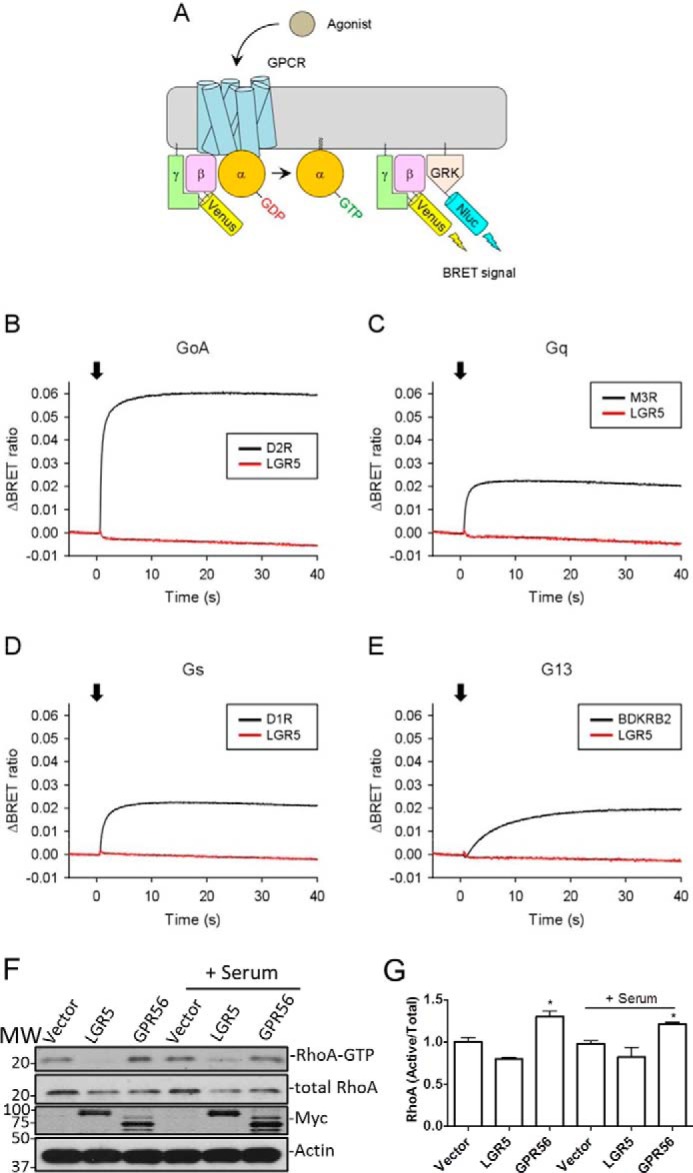Figure 4.

LGR5 did not exhibit GEF activity with any of the four heterotrimeric G protein subfamilies. A, a schematic diagram showing the principle of the BRET assay system. Agonist-bound GPCR exerts GEF activity, leading to the dissociation of inactive heterotrimeric G proteins into active GTP-bound Gα and Venus-Gβγ subunits. The free Venus-Gβγ then interacts with masGRK3ct-Nluc to produce the BRET signal. B–E, real-time measurement of GEF activity in living cells. HEK293T/17 cells were transfected with GPCR (dopamine D2 (D2R), M3 acetylcholine (M3R), dopamine D1 (D1R), or bradykinin B2 receptor (BDKRB2), or LGR5) and Gα subunit (GαoA, Gαq, Gαs, or Gα13) with the BRET sensor pair Venus-Gβγ and masGRK3ct-Nluc. Agonists (100 nm dopamine for dopamine D1 and D2 receptors, 100 nm acetylcholine for M3 acetylcholine receptor, 100 nm bradykinin for bradykinin B2 receptor, and 20 nm RSPO3 for LGR4 and LGR5) were applied on transfected cells to stimulate GPCRs at 0 s. F, representative WB results of active RhoA GTPase pulldown assay in stable HEK293T cells overexpressing vector, Myc-LGR5, or Myc-GPR56. Cells were starved overnight and then treated ±10% serum for15 min. G, quantification of WB results of Rho GTPase. Error bars are S.E. (n = 2). *, p < 0.05 compared with vector and LGR5 cells.
